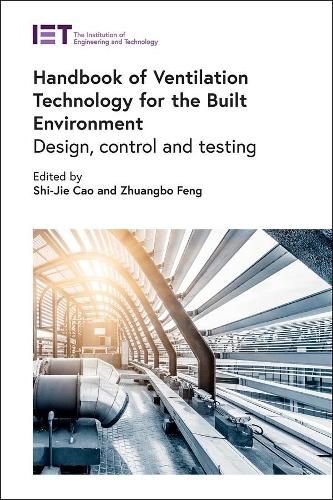Readings Newsletter
Become a Readings Member to make your shopping experience even easier.
Sign in or sign up for free!
You’re not far away from qualifying for FREE standard shipping within Australia
You’ve qualified for FREE standard shipping within Australia
The cart is loading…






The general purpose of ventilation in buildings is to provide healthy air for breathing by both diluting the pollutants originating in the building and removing the pollutants from it. Building ventilation plays a strong role for the good health, comfort, security and productivity of inhabitants, workers and visitors. Many new challenges with energy and pollution implications have arisen, including the identification and control of contaminant sources, fast building design requirements, online demand, sustainability and climate change adaptation.
This comprehensive research reference covers state of the art research starting with ventilation systems including duct network and fluid machinery, air cleaning technologies, air distribution in mechanical ventilation systems, air distribution in natural ventilation system, and heating and cooling systems. The authors then present innovating methods for the design, control and testing including system design, numerical methods, fast predictions methods, testing methods and maintenance. The book concludes with applications in industrial buildings, high-rise buildings and urban areas.
Handbook of Ventilation Technology for the Built Environment is a complete guide to the field, providing invaluable information for scientists, researchers and engineers from academia and industry who are looking to broaden or update their knowledge. It is also a useful resource for policy makers, facility managers, regulators and standards bodies in the field.
$9.00 standard shipping within Australia
FREE standard shipping within Australia for orders over $100.00
Express & International shipping calculated at checkout
The general purpose of ventilation in buildings is to provide healthy air for breathing by both diluting the pollutants originating in the building and removing the pollutants from it. Building ventilation plays a strong role for the good health, comfort, security and productivity of inhabitants, workers and visitors. Many new challenges with energy and pollution implications have arisen, including the identification and control of contaminant sources, fast building design requirements, online demand, sustainability and climate change adaptation.
This comprehensive research reference covers state of the art research starting with ventilation systems including duct network and fluid machinery, air cleaning technologies, air distribution in mechanical ventilation systems, air distribution in natural ventilation system, and heating and cooling systems. The authors then present innovating methods for the design, control and testing including system design, numerical methods, fast predictions methods, testing methods and maintenance. The book concludes with applications in industrial buildings, high-rise buildings and urban areas.
Handbook of Ventilation Technology for the Built Environment is a complete guide to the field, providing invaluable information for scientists, researchers and engineers from academia and industry who are looking to broaden or update their knowledge. It is also a useful resource for policy makers, facility managers, regulators and standards bodies in the field.